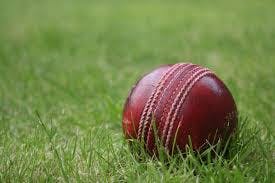Test Your Knowledge: The Essential Differences Between Red and White Cricket Balls
Cricket is one of the major sports in the world where conditions, be it weather or, the pitch of the ball play a huge role


Test Your Knowledge: The Essential Differences Between Red and White Cricket Balls
Cricket is one of the major sports in the world where conditions, be it weather or, the pitch of the ball play a huge role

Last updated: 2024-05-09
6 minutes read
Table of Contents
Being touted as the gentlemen’s game, cricket abides by various rules and regulations. The game is getting evolved as well and there have been many experiments as well. This in turn has made various changes in the laws of the game with time, which has been game evolved.
Cricket is one of the major sports in the world where conditions, be it weather or, the pitch of the ball play a huge role. Coming to the ball with which the game is played, is the most essential part of the game as the condition of the ball dictates the terms when the game is being played.
Earlier when cricket started, only one ball, the red ball, was used but as the game evolved there were as many three balls with which the game is played. White ball is used for limited-overs cricket (T20s and ODIs) while the red ball is used for Test cricket. There’s also a pink ball, with which day and night Test cricket is played.
However, all the cricket balls are manufactured in the same way with minor differences. The ball comprises a cork that is wounded by strings and is later covered by a leather case. All the balls, red, white and pink, are the same in size i.e. 155.9-163.0 grams.
Difference between red ball and white ball in cricket
One of the big things that users fail to understand is the difference between a white ball and a red ball. The red ball was earlier used for all the cricket matches. However, the introduction of the white-ball changed the game. One of the major differences between red and white balls is that the ball used for limited overs in cricket is user-friendly.
Red balls were not visible to the users but the introduction of white ball changed the dynamics as it allowed the fans to follow the game better than the red ball. Also, the extra polish on the white ball allows it to be more shiny and allows the ball to swing more than the red and pink ball.
The surface of the white ball is harder as compared to the red ball and pink ball. This is because it has a finer and smoother finish. The manufacturing of both the balls is the same as both are stitched with white threads. But on the other hand, the pink ball is different because it is stitched with black thread.
While the white ball is polished, wax is applied to a red ball allowing the bowler to extract the reverse swing. Rubbing the ball constantly allows it to swing reversely. The major difference between a white ball and a red ball is the colour used for dying, which is essential in the swinging properties of both balls.
FAQS
What is the weight difference between a red ball and a white ball in cricket?
There’s not much weight difference between the red ball and the white ball. Both the balls are of almost the same size. The ideal size of the cricket ball ranges between 155.9-163.0 grams. Some studies have revealed that red balls are lighter in weight than white balls and it allows bowlers to take full advantage.
What is the test match ball colour?
The Test matches are played with two kinds of balls, red and pink. Red balls are used for the day Test matches while pink balls were introduced for the day and night games as red balls aren’t visible under yellow floodlights. They appear brownish and seem to be blending with the pitch.
Who are the top ball manufacturers of cricket balls?
There are three ball manufacturers of cricket balls. For matches in England and the West Indies, Dukes are the producers. The Dukes balls are darker in shade and are created as per the conditions in England. It also swings till the 50th over and seams till the 80th over.
The other ball manufacturer is Kookaburra. Their balls are used for Test matches in Australia, New Zealand, Sri Lanka, South Africa, Bangladesh, Zimbabwe and Pakistan. They tend to swing till the 30th over and after that get softer, making it easier for the batters.
The third ball manufacturer is s SG (Sanspareils Greenlands). Their balls are used for Test cricket in India. The SG balls have a wider seam which helps the ball to spin. It swings less and a 30 overs reverse swing comes into play.
For more features, guides, and the latest news in the world of football, cricket and more make sure to stay connected with Sportsboom.com.

Ankitjit Singh
I am just a guy in his early 20s whose dream was to play cricket but now believes his job is to serve cricket. I picked the cricket bat at the age of 3, pursued science as I grew up but eventually followed my heart to come into journalism and do the second-best thing in the world after playing the sport.